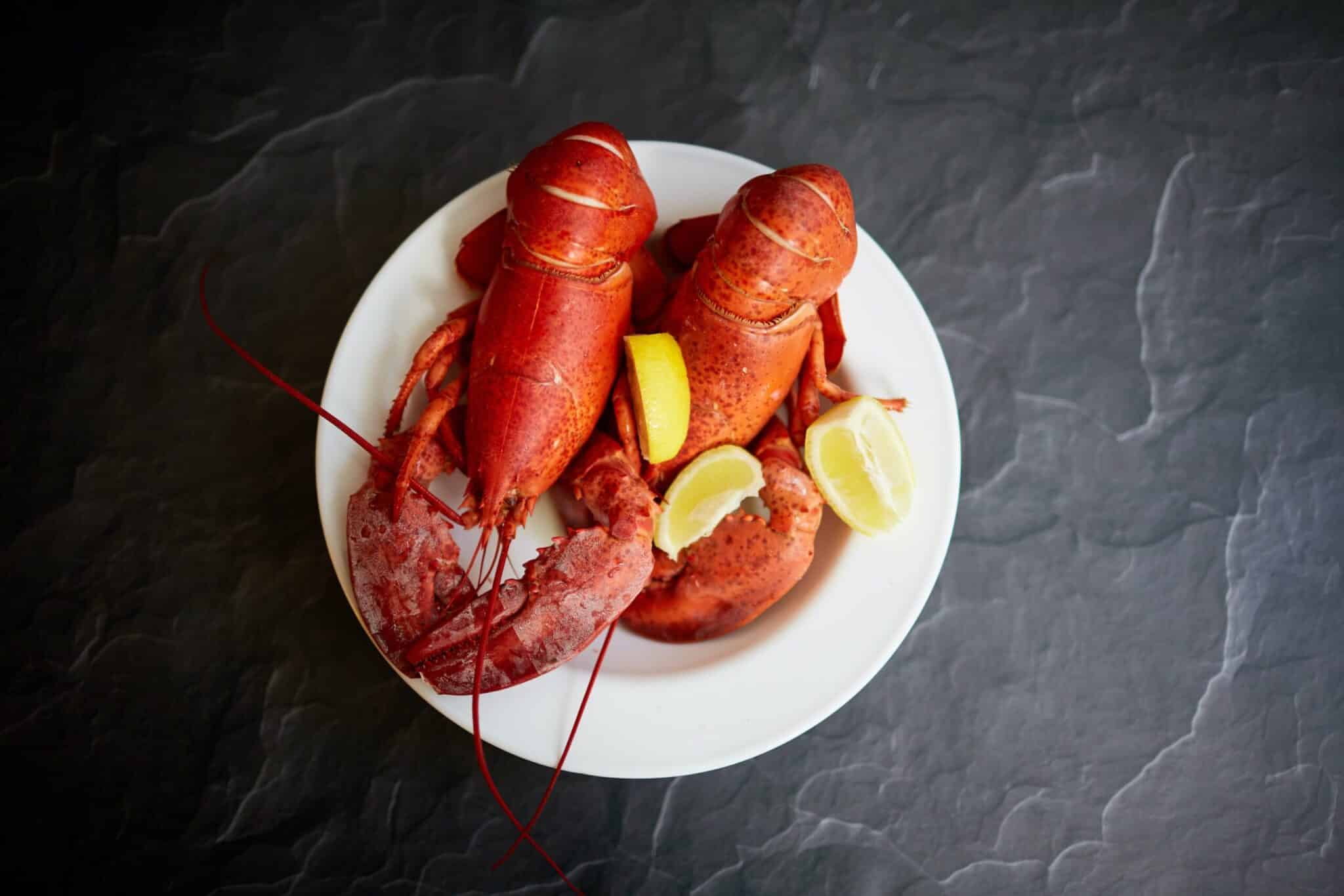
While people love to eat lobster, for many, how to de-shell lobster can be intimidating. The good news is, with a little patience and understanding you can learn how to remove the shell of a lobster and identify each edible part in no time. That way, you’ll not only get the more meat from each lobster, but you’ll get the most lobster for you money. Knowing how to de-shell lobster then, means you’ll be saving money and getting the most out of your meal. Here’s a step-by-step primer:
Lobster Anatomy
Did you know that lobster meat can be found throughout its body? In fact, more than just the claws and tail, there’s meat to be found nearly everywhere. In a nutshell, from end to end, a lobster consists of its two big claws, the larger crusher claw and the slightly smaller pincher claw. They are connected by knuckles, the arm-like appendages, to the main body. The body is segmented and consists of a head, thorax, abdomen, which is commonly referred to as the tail, and swimming appendages (its flippers). A set of 4 walking legs are connected to each side of the thorax. Swimmerets are the feathery appendages on the underside of the abdomen and tail, and the area where female lobsters carry their eggs.
Getting Started
Tools and equipment for de-shelling lobster are minimal, but essential. There’s lots of splatter when cracking open a lobster. It’s best to wear a bib and to spread old newspapers over the kitchen table as a tablecloth of sorts. When finished, after the meal, it will be easier clean-up. You will also need a metal cracker, a fork, and/or metal pick to access the meat inside the shell. Finally, place a large bowl on the table for the discarded shells.
Once cooked, and lobster has cooled enough to handle, start by separating parts from the body. Basically, your strategy in how to de-shell lobster and how to devour it is the same—in segments.
Step 1: The Big Claws
Begin first by breaking off the knuckles and big claws from the main body. Once removed, separate the knuckles from the big claws. Holding the big claw, pull the lobster’s ‘thumb’ off. Next, use the metal cracker to split the center of the claw shell. Once split open, use the lobster pick to pull out the meat. It should be the approximate size of the shell.
Step 2: The Knuckles
Those arm-like appendages are joined together in three sections. Break them apart and use the cracker to split the larger knuckle open to pull the meat out with the pick. The other two sections are small enough to simply pull the meat from with the pick.
Step 3: The Tail
Firmly, but gently, bend and twist the tail off from the thorax, i.e., the main body of the lobster. Once it is detached, twist and pull the tail flippers off. Use the fork or pick to pull any meat out of the fins. Next, crack the tail open by snapping it back. That should be sufficient enough to push the tail meat out of the shell in one piece with either a fork or by simply sticking your finger in the smaller opening at the base where the flipper was.
Step 4: The Walking Legs
Though small, each of the walking legs has meat in them. Break them off and separate them into sections. You can either pull the meat out with a pick or squeeze between your fingers and suck the meat out.
Step 5: The Head and Thorax
You’ll find approximately a half cup to three-quarters cup of meat inside the head and the main body cavity. First, pull and peel off the outer skeleton and toss it in the bowl. Split the body down the middle with your thumbs. You’ll find flat meat lined along the body shell. In the body cavity, pick out the thin, papery shell. Beneath is the rib meat, use your pick or fork to pull it off. If your lobster is female, you’ll find black or red roe, its eggs, also known as coral. Some consider it a delicacy. If it is black, it needs to be steamed until it turns red, and then it’s edible
Step 6: Tomalley or No Tomalley
The tomalley is the soft green mass found in the body cavity. It is the lobster’s liver and pancreas. When cooked it turns green. It can be mixed with breadcrumbs or eaten alone. Though some consider it a delicacy, it should only be eaten in small quantities. Fair warning: the FDA advises against consumption of tomalley due to the toxins that may be present in the liver and pancreas.
Fresh Maine Lobster at Your Doorstep
Now that you know how to de-shell lobster, it’s time to test your skills! For the freshest live lobster from Maine, look no further than Klenda Seafood – we deliver directly to your door! Klenda Seafood ships live lobsters anywhere in the US so that you can indulge in succulent Maine seafood anywhere.
Order Maine lobster delivered to your door! We also offer curbside pick-up at our South Portland location if you live locally – call for details and to place your order over the phone! Contact us— we would be happy to answer any of your questions.
